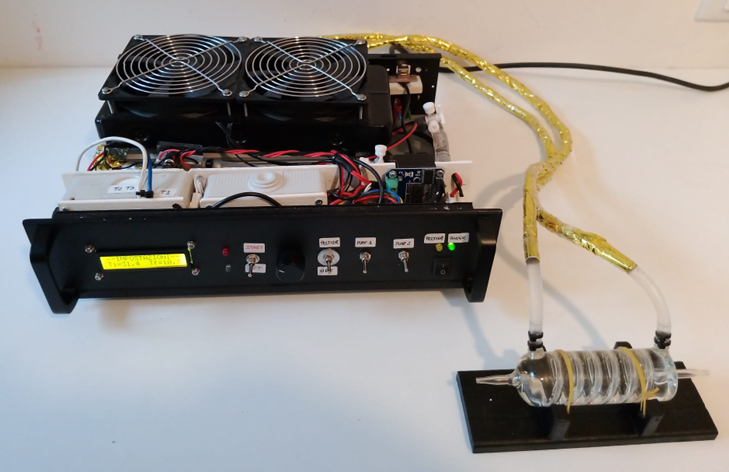Thermostatic Module
The thermostatic unit is designed to heat or cool the organ perfusion liquid in a controlled manner.
The fluid from the thermostatic unit circulates in a glass heat exchanger placed in the organ perfusion circuit.


The core component of the device is the Peltier cell, which can heat one side while cooling the other, depending on the polarity of their power supply.
Two 12V Peltier cells are used , each drawing up to 6A.
The power supply is regulated through an H-bridge, using a PWM signal generated by an Arduino board.
To work properly, the surfaces of the cell must exchange heat effectively.
Aluminum heat sinks are used in contact with the Peltier cells.

There are two independent fluid circuits:
1) One circuit runs through a central heat exchanger situated between the Peltier cells and the glass heat exchanger.
2) The second circuit travels through two lateral heat exchangers and then to the radiator.
Each circuit is powered by its own pump, which is driven by a 12V DC motor.

Negative Temperature Coefficient (NTC) Thermistor are used to monitor the temperature at different site:
NTC1 near the peltier plates
NTC2 inside the fluid to the glass heat exchanger
NTC3 inside the perfusion chamber.
A voltage divider was build using a 100K NTC.
Calibration was conducted with a median of 100 measurements for each step.
A cubic equation is used for wide range of temperatures, while a linear approximation fits small range.




Crea il tuo sito web con Webador